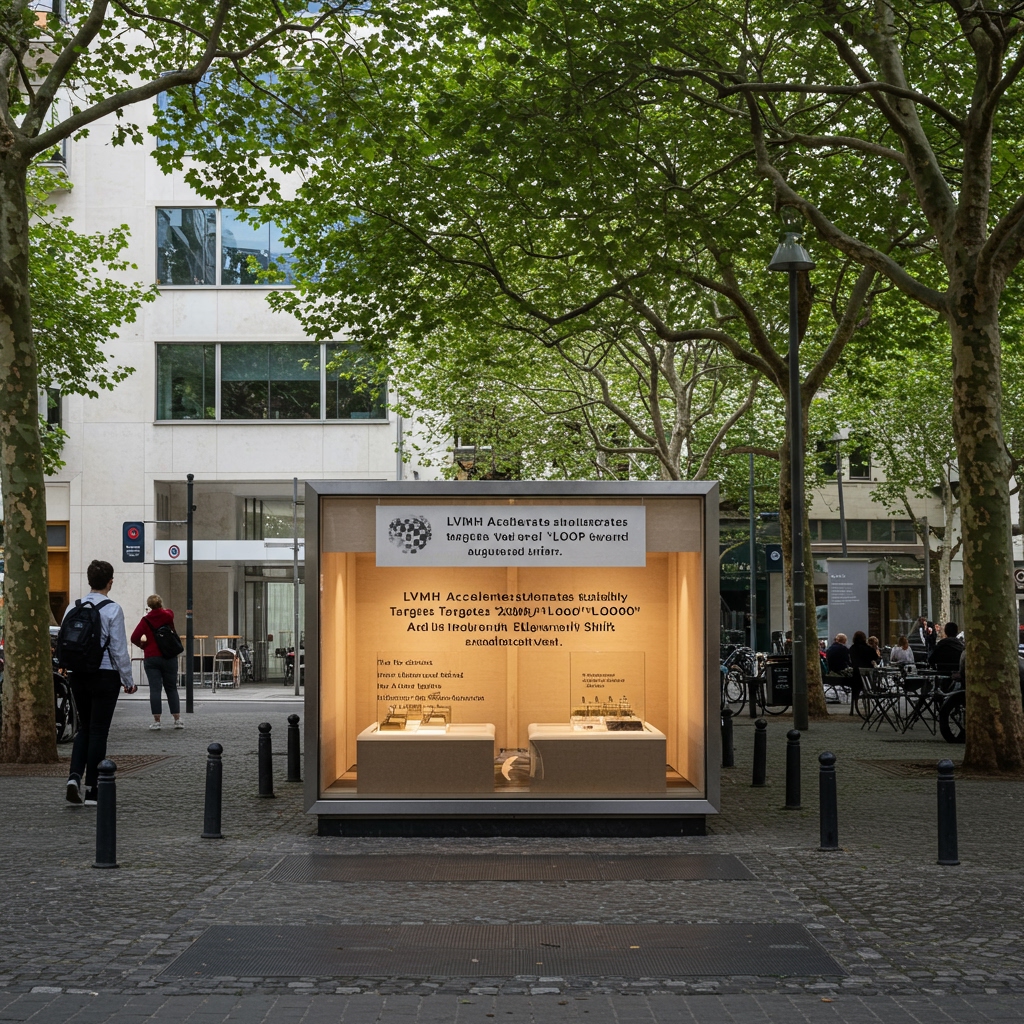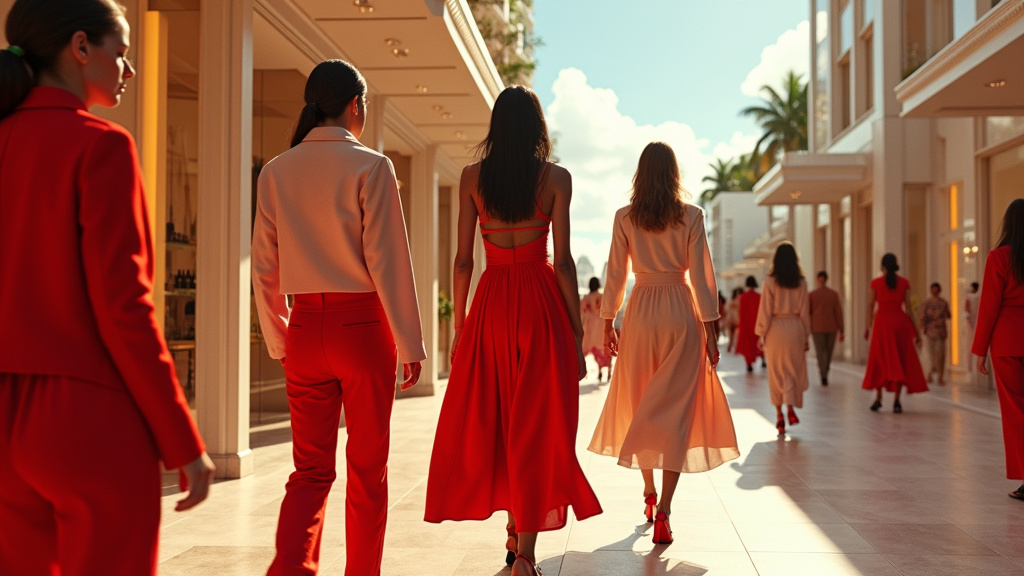Luxury Giant LVMH Unveils Accelerated Circularity Strategy
Paris, France – LVMH Moët Hennessy Louis Vuitton, the world’s leading luxury conglomerate, today announced a significant acceleration of its environmental sustainability targets, outlining ambitious new goals focused on reducing waste and increasing the use of recycled materials across its vast portfolio of brands. The announcement details commitments to achieve a 70% reduction in landfill waste originating from its production processes by the year 2030 and to elevate the average proportion of recycled material use to 45% across all its maisons by 2028.
This strategic move comes just two days after the European Parliament took a crucial step forward by advancing its landmark legislative bill aimed at addressing textile waste. The timing underscores the growing influence of regulatory developments on corporate sustainability strategies within the luxury sector and beyond.
The ‘LOOP 2030’ Initiative: Ambitious Goals Detailed
The newly unveiled initiative, formally dubbed ‘LOOP 2030’, represents a considerable acceleration of previously established sustainability timelines for the group. The targets – a 70% reduction in production-related landfill waste by 2030 and 45% recycled content by 2028 – significantly pull forward goals that were initially set for later dates, signalling a heightened sense of urgency and commitment from the luxury giant.
The 70% waste reduction target specifically addresses waste generated during the manufacturing and production phases, aiming to minimize materials sent to landfill through improved processes, increased recycling, and potentially upstream material efficiency. The 45% recycled content target applies broadly across all material categories used by LVMH brands, from textiles and leather goods to packaging and hard luxury components, pushing for greater integration of post-consumer and post-industrial recycled inputs.
Strategic Response to Evolving Landscape
Bernard Arnault, Chairman and CEO of LVMH, articulated the strategic rationale behind the accelerated timeline. He stated that the ‘LOOP 2030′ initiative is a direct and strategic response to the dynamically evolving landscape of consumer expectations and global legislative trends. Consumers, particularly in younger demographics, are increasingly scrutinizing brands’ environmental credentials, while regulators worldwide, especially in key markets like the European Union, are implementing stricter environmental regulations.
“Our commitment to sustainability is not just an ethical imperative but a core component of our long-term business strategy,\” Mr. Arnault commented. \”By accelerating our circularity targets, we are not only addressing the critical environmental challenges facing our industry but also anticipating the demands of our discerning clientele and the direction of global policy. ‘LOOP 2030’ is a testament to our dedication to leading by example in luxury sustainability.\”
Significant Investment in Circularity and Transparency
Supporting the ambitious ‘LOOP 2030’ goals is a substantial planned investment exceeding €500 million over the next three years. This significant capital allocation is earmarked for fostering innovation and implementing widespread changes across LVMH’s extensive operations.
The investment will primarily focus on two key areas: the development and adoption of circular economy technologies and the enhancement of supply chain transparency platforms. Circular economy technologies include advancements in material recycling processes, sustainable sourcing methods, upcycling techniques, and product end-of-life solutions. Supply chain transparency platforms aim to provide greater visibility into the origin and environmental footprint of materials used by brands, enabling better tracking and management of resources and waste.
This investment will cascade across all brands within the LVMH portfolio, including iconic houses such as Louis Vuitton, Dior, and Celine, necessitating significant operational adjustments and technological integration from material sourcing and design through manufacturing and logistics.
Implications for Luxury Sustainability Leadership
The decision to accelerate these targets by several years is noteworthy within the luxury sector, often perceived as slower to adopt rapid operational shifts due to the emphasis on craftsmanship, rare materials, and long product lifecycles. By setting forth aggressive deadlines for waste reduction and recycled content integration, LVMH is proactively positioning itself as a frontrunner in the evolving landscape of luxury sustainability.
Achieving these targets will require close collaboration across the group’s diverse maisons, supply chain partners, and potentially external innovators in recycling and material science. The investment in transparency platforms is crucial for validating the environmental claims associated with increased recycled content and waste reduction, building consumer trust and meeting future reporting requirements.
Regulatory Catalyst: The EU Textile Bill
The timing of LVMH’s announcement, occurring just two days after the EU Parliament’s vote, highlights the tangible impact of legislative action on corporate environmental strategies. The proposed EU textile waste regulation bill, which is part of the broader European Green Deal, aims to tackle the significant environmental footprint of the textile and fashion industry. Key elements often include extended producer responsibility schemes, mandatory recycled content targets, and measures to combat greenwashing.
While the EU bill is still progressing through the legislative process, its advancement signals a clear regulatory direction that will likely mandate greater circularity and waste management efforts from all companies operating within the EU market. LVMH, with a substantial presence in Europe, is clearly anticipating and responding to this shift, seeking to not only comply but to leverage sustainability as a competitive advantage.
Conclusion
LVMH’s accelerated ‘LOOP 2030’ initiative, backed by a half-billion-euro investment, represents a significant commitment to embedding circular economy principles deeper within its operations. By pulling forward critical targets for waste reduction and recycled material use, the luxury conglomerate is aligning its business strategy with pressing environmental concerns and responding proactively to the evolving regulatory climate, particularly influenced by recent developments in EU textile legislation. This move sets a new benchmark for sustainability ambition within the luxury industry and signals a future where circularity and transparency are integral to the definition of luxury itself.





